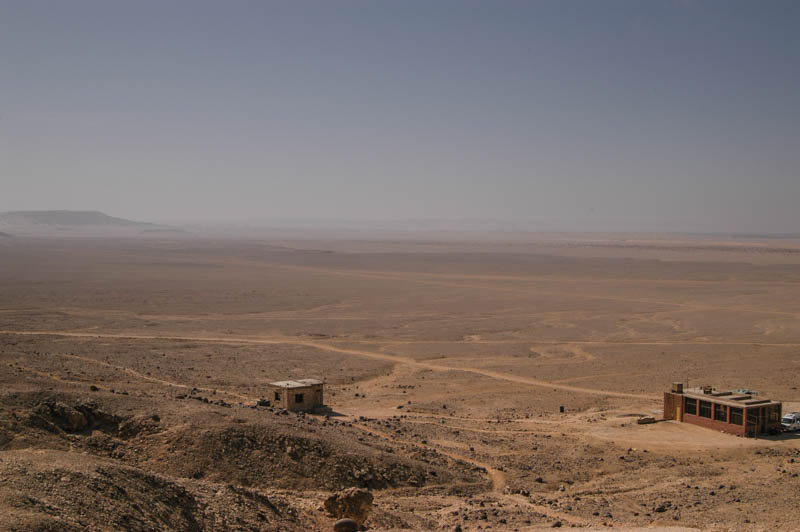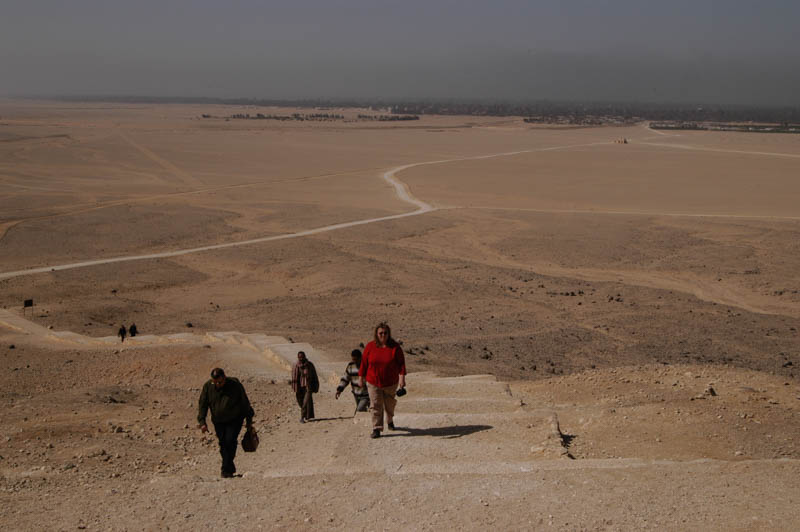Visiting Amarna was a bit disappointing – only because I expected the sort of ruins that we had been visiting in Luxor and elsewhere. Little remains here of the vast city of Akhenaton, the temple of the pharaoh Akhenaton and center of the worship of the god Aten.


During the brief reign of Akhenaton and his wife, Nefertiti, the style of art and architecture in Egypt changed dramatically — from rigid, formulaic reliefs focuses on death and reincarnation to fluid, lively reproductions of life.
When Akhenaton’s worship of Aten threatened the other cults in Egypt — notably the priests of Amun, who wielded immense power — the pharaoh moved his city to the the new capital here, on an empty plain. The city was called Akhenaton, “Horizon of the Aten” and was settled in the fifth year of his reign. It wasn’t enough. Akhenaton initiated a purge of the old cults, closing temples all over Egypt and usurping the worship of Amun in many others.
The remains of the city are gone, except for a few palm groves and fragments of pottery strewn across the plain. The city was abandoned with the rule of Tutankhamun, so it lasted only twelve years and reverted to the desolate plain where it was founded. It is assumed that much of the planned building was never finished.
The major structure here would have been the Great Temple of Aten, and along the royal road through the city were a Northern Palace and Southern Palace. The best preserved building (and even this is just a faint outline) is the Northern Palace.